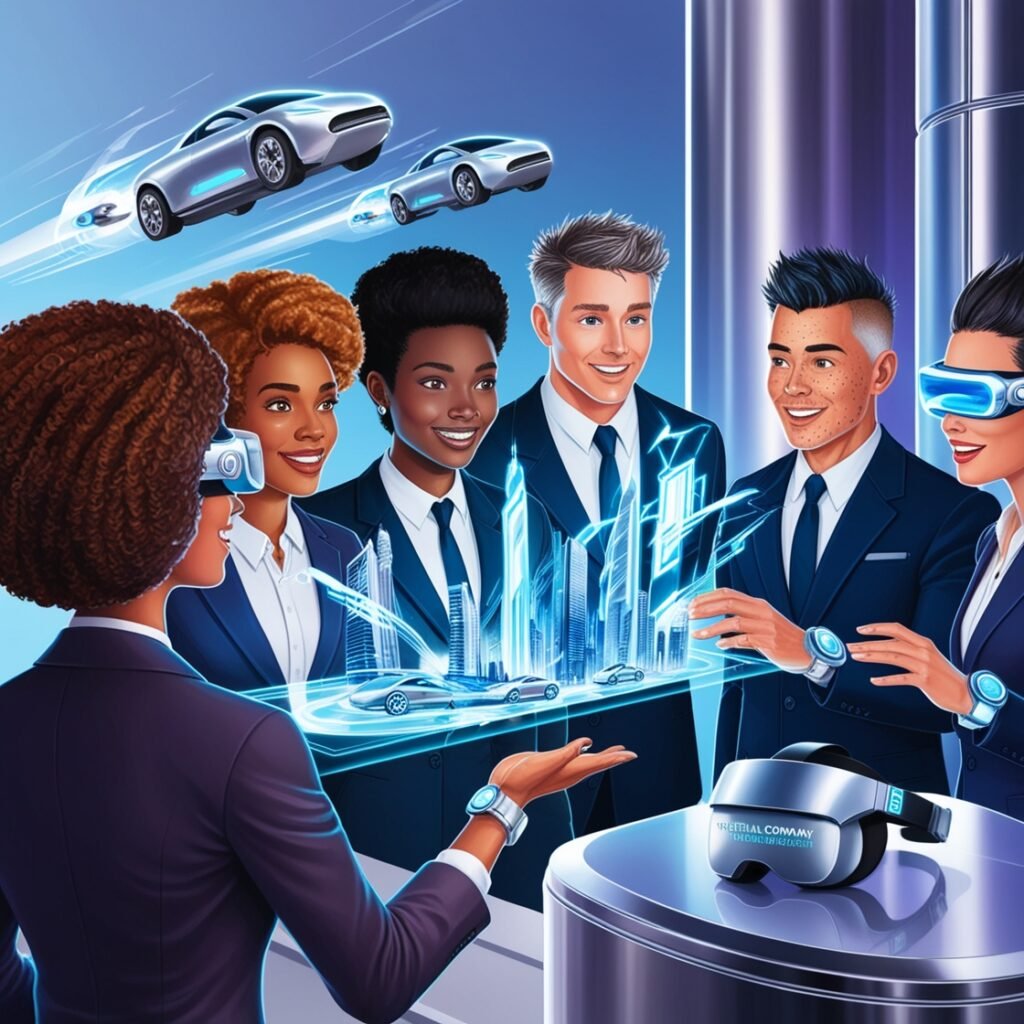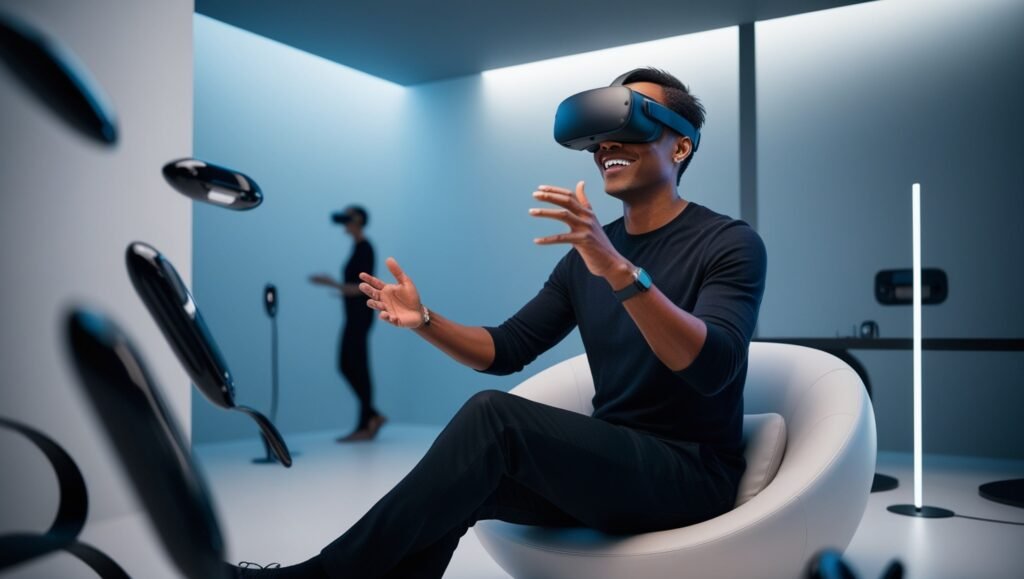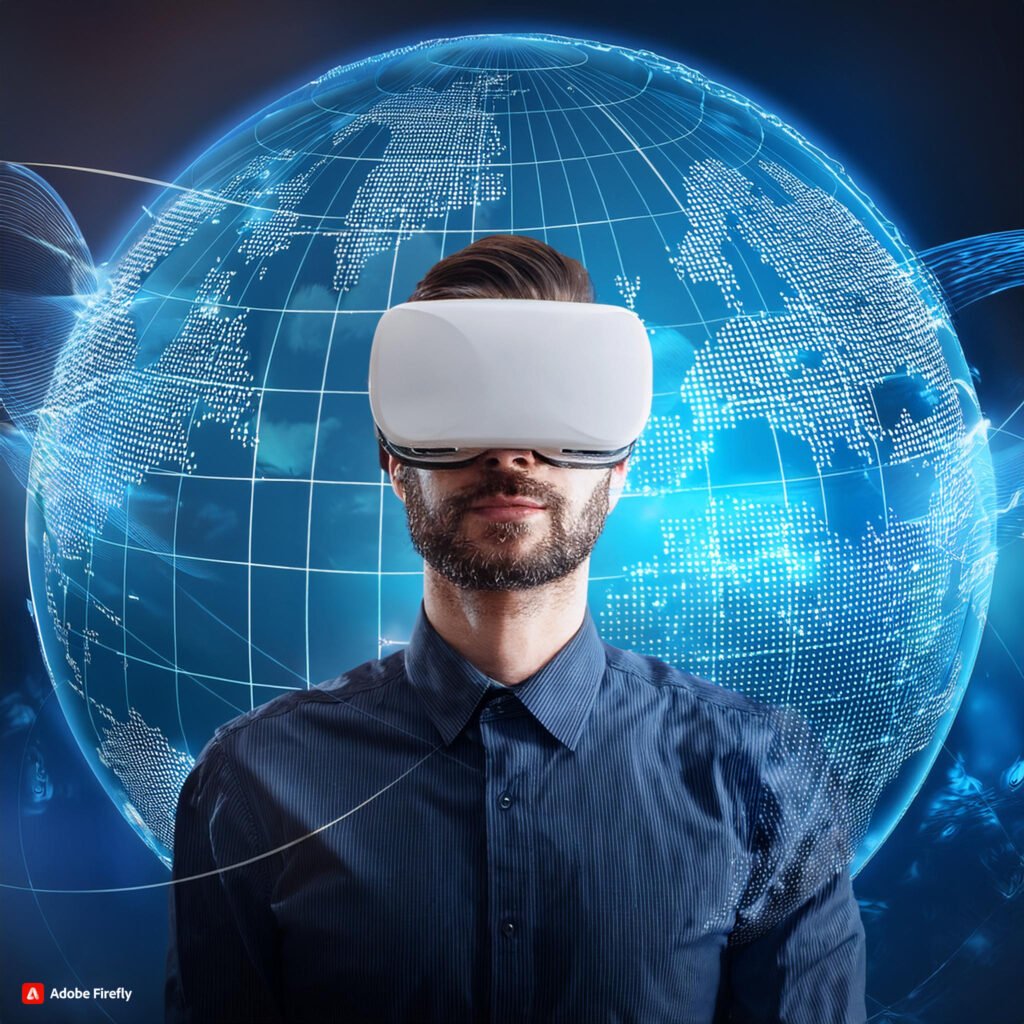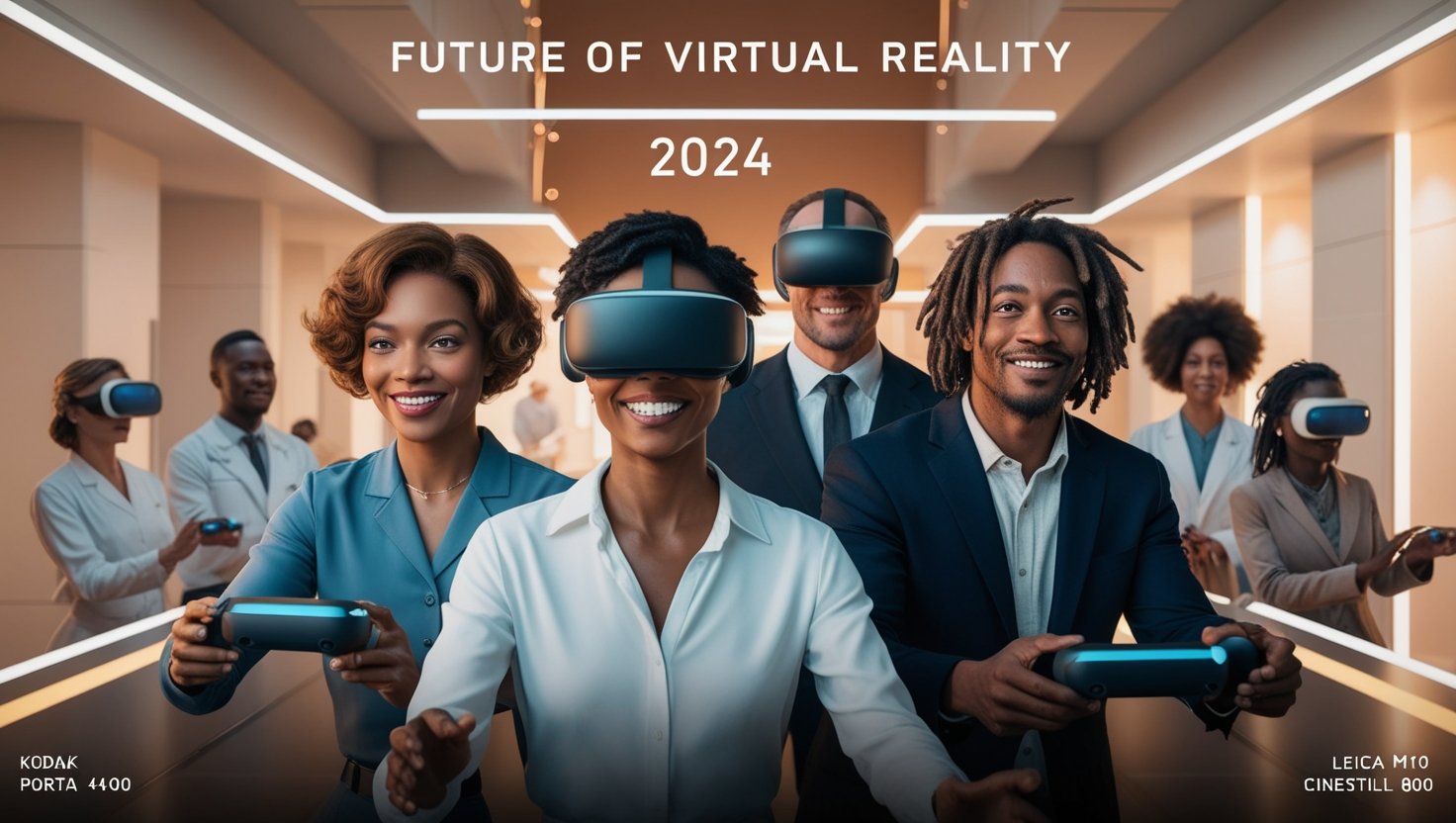Predictions on how VR will evolve and its applications across industries.
Virtual Reality (VR) has steadily moved from the fringes of futuristic technology to the forefront of innovation in business. With its ability to create immersive, interactive experiences, VR has already begun to reshape various industries. As we move into 2024, the potential of VR is becoming increasingly apparent, with significant advancements on the horizon that promise to transform the way businesses operate and interact with their customers.
Current State of Virtual Reality
As of 2023, Virtual Reality is experiencing rapid growth, but it’s still in the early stages of mainstream adoption. Industries such as gaming, entertainment, and education have been the frontrunners in utilizing VR technology, but we are beginning to see its application in areas like healthcare, retail, and real estate. Despite its potential, the current challenges with VR include high costs, technological limitations, and a relatively steep learning curve for users and developers alike.
However, the landscape is changing rapidly. The development of more affordable and powerful VR hardware, along with an increasing amount of high-quality content, is setting the stage for VR to become a critical tool for businesses across a wide array of sectors.

Predictions for VR Evolution in 2024
2024 is poised to be a transformative year for Virtual Reality, with several key developments expected to accelerate its adoption and effectiveness in business settings.
1. Advancements in Hardware:
One of the most significant barriers to VR adoption has been the hardware—specifically, the high cost and bulky nature of VR headsets. In 2024, we anticipate the release of lighter, more comfortable, and affordable VR devices. Enhanced sensors and improved tracking technology will make VR experiences more intuitive and immersive, reducing motion sickness and increasing user comfort. Learn more about the latest VR hardware advancements.
2. Improvements in Software and Content Creation:
The quality of VR content is critical to its success. With advancements in software development tools, creating VR content will become easier and more cost-effective. AI and machine learning are expected to play a significant role in content creation, allowing for more personalized and adaptive VR experiences that can cater to individual user needs and preferences. Explore VR content creation tools.
3. The Rise of VR in the Metaverse:
The concept of the Metaverse—a virtual world where users can interact, work, and play—has gained considerable traction. In 2024, VR is expected to become a cornerstone of Metaverse experiences, enabling more immersive and interactive environments. Businesses will increasingly explore opportunities in this space, from virtual storefronts to virtual events, as the Metaverse begins to take shape as a viable extension of the physical world. Read about the Metaverse and VR.
4. VR’s Role in Enhancing Remote Work and Collaboration:
The shift towards remote work has accelerated the need for effective virtual collaboration tools. VR can bridge the gap between remote workers by providing virtual office spaces and meeting rooms where employees can interact as if they were physically present together. In 2024, we anticipate a rise in the use of VR for remote team building, training, and collaboration, making it a key tool for businesses with distributed teams. Discover VR for remote work.
5. Increased Accessibility and Affordability of VR Technology:
As VR technology continues to evolve, it will become more accessible to businesses of all sizes. The reduction in hardware costs, coupled with the availability of more versatile and user-friendly software, will lower the barriers to entry, allowing even small businesses to leverage VR for various applications. Check out affordable VR solutions.

Applications of VR Across Industries
As VR technology advances, its applications across different industries are expanding rapidly. Here’s a closer look at how various sectors are poised to benefit from VR in 2024:
1. Healthcare:
- Medical Training and Surgery Simulations: VR offers a risk-free environment for medical professionals to practice and refine their skills. In 2024, expect more widespread use of VR for surgical simulations, allowing doctors to perform complex procedures virtually before attempting them on real patients. Read about VR in medical training.
- Mental Health Treatment: VR therapy is becoming an effective tool for treating conditions such as PTSD, anxiety, and phobias. By immersing patients in controlled environments, therapists can help them confront and manage their symptoms in a safe space. Learn more about VR therapy.
2. Education:
- Virtual Classrooms and Immersive Learning: VR is transforming education by creating immersive learning experiences. Virtual classrooms can bring lessons to life, allowing students to explore historical events, scientific phenomena, and even distant parts of the world, all from their classroom. Explore VR in education.
- Vocational Training: VR is increasingly being used for vocational training, providing students with hands-on experience in fields such as welding, electrical work, and machinery operation without the need for physical materials or risks. Read about VR in vocational training.
3. Retail and E-commerce:
- Virtual Shopping Experiences: The retail industry is set to embrace VR by offering virtual shopping experiences where customers can browse, try on, and purchase products without leaving their homes. This immersive shopping experience can drive higher engagement and conversion rates. Discover virtual shopping trends.
- Product Visualization: VR allows customers to visualize products in their real-world environments before making a purchase. This is particularly useful for items like furniture, where seeing how a piece fits within a space can significantly influence buying decisions. Learn about VR for product visualization.

4. Real Estate:
- Virtual Property Tours: The real estate industry is leveraging VR for virtual property tours, allowing potential buyers to explore homes and commercial properties from anywhere in the world. This technology saves time and resources for both buyers and sellers. Read about VR in real estate.
- Architectural Visualization: Architects and developers use VR to create realistic 3D models of buildings, enabling clients to walk through and experience a property before it’s built. This helps in making design adjustments early in the process, reducing costly changes later on. Explore VR for architectural visualization.
5. Entertainment and Gaming:
- Enhanced Gaming Experiences: Gaming remains one of the most popular applications of VR. In 2024, expect more immersive and interactive VR games that push the boundaries of what’s possible in virtual environments. Check out the latest VR gaming trends.
- VR in Film and Live Events: VR is being used to create new forms of entertainment, including immersive films and virtual live events where audiences can feel as though they’re part of the action. This trend is likely to continue growing, with more content creators exploring the potential of VR. Learn about VR in film and events.
6. Manufacturing and Engineering:
- Design and Prototyping: VR allows engineers and designers to create and test prototypes in a virtual environment before moving to physical production. This reduces the time and cost associated with product development and allows for more innovative designs. Discover VR in manufacturing.
- Training and Safety Simulations: Manufacturing companies are using VR for employee training and safety simulations. Workers can practice operating machinery and responding to emergencies in a controlled virtual environment, improving safety and efficiency. Learn about VR training simulations.
7. Tourism:
- Virtual Travel Experiences: The tourism industry is tapping into VR to offer virtual travel experiences. Whether it’s exploring a distant city or experiencing a cultural event, VR allows people to “travel” without leaving their homes. This technology is particularly valuable in promoting destinations and driving tourism. Explore VR in tourism.
- Destination Marketing: VR is becoming a powerful tool for destination marketing, allowing potential tourists to explore hotels, resorts, and attractions virtually before making a booking. This immersive experience can help drive tourism by showcasing a destination’s unique offerings in a compelling way. Read about VR in destination marketing.
The Future of VR in Business
As we look ahead to 2024, the potential of VR in business is vast. Companies that embrace this technology will be better positioned to innovate, improve customer experiences, and stay ahead of the competition. However, businesses must also consider the challenges associated with VR adoption, such as the need for skilled professionals to create and manage VR content, as well as the costs involved in implementing VR solutions.
Furthermore, as VR technology becomes more prevalent, consumer expectations will evolve. Businesses will need to stay ahead of these expectations by continuously exploring new VR applications and ensuring that their VR experiences are user-friendly and engaging.
Conclusion
The future of Virtual Reality in business is bright, with 2024 poised to be a pivotal year for the technology. From advancements in hardware and software to its expanding applications across various industries, VR is set to revolutionize how businesses operate and engage with their customers. As VR continues to evolve, it presents exciting opportunities for innovation and growth. Businesses that invest in VR technology and explore its potential will be well-positioned to lead in their respective fields and create compelling, immersive experiences for their audiences.
Explore our Virtual Reality articles
How Leading Brands Can Benefit from Virtual Reality in Marketing by 2030 – Studio Image Works
The Future of Virtual Reality in the Education Sector: A Vision for Tomorrow – Studio Image Works






